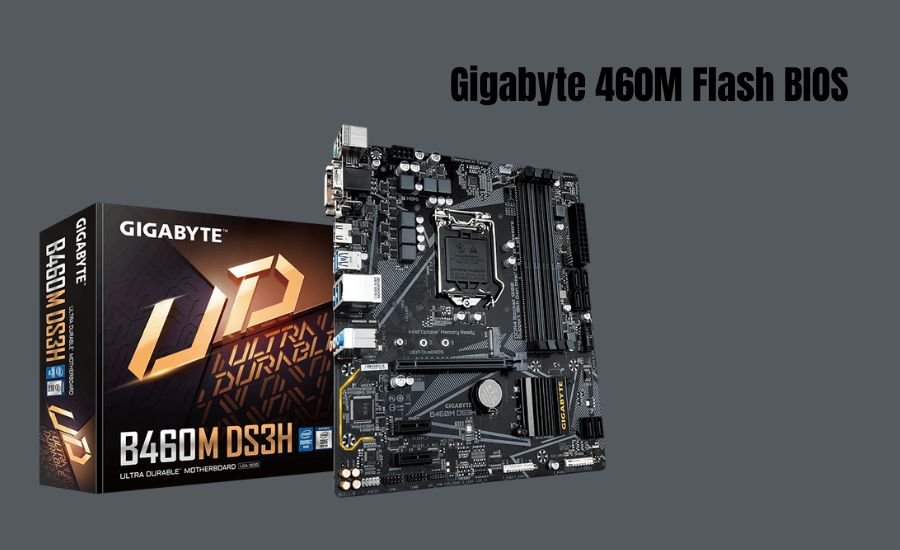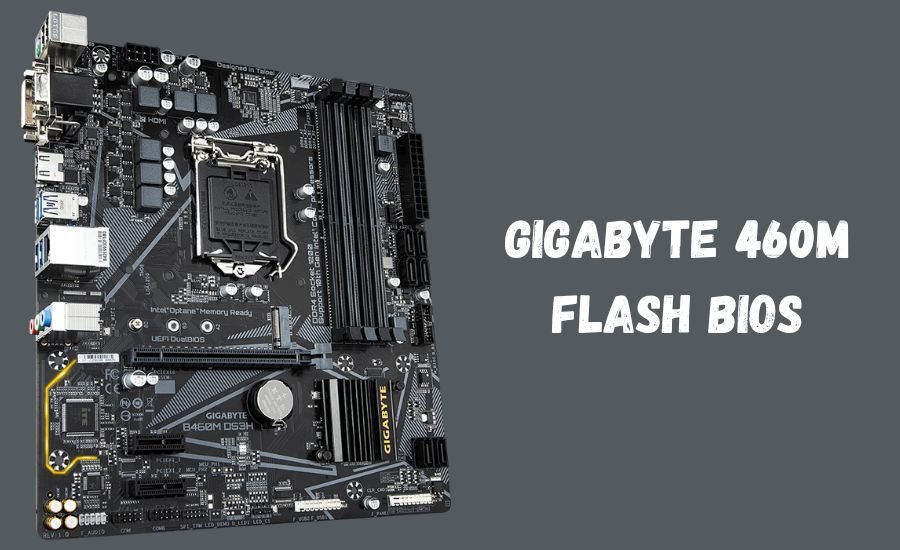In today’s fast-paced digital world, optimizing your computer’s performance is essential. One way to achieve this is by updating the BIOS. The Gigabyte 460M Flash BIOS plays a crucial role in your computer’s functionality and performance. In this comprehensive guide, we will explore what the Gigabyte 460M Flash BIOS is, how to update it, and the benefits of doing so. At TECH DENSER, we believe in empowering our readers with valuable information, so let’s get started on enhancing your computing experience!
What is BIOS?
Understanding BIOS
BIOS stands for Basic Input/Output System. It is firmware embedded on your computer’s motherboard, responsible for initializing hardware during the boot process and providing runtime services for operating systems and programs. The BIOS is critical for starting up your computer and ensures that the operating system loads correctly.
Role of BIOS in Your Computer
The BIOS performs several essential functions:
- POST (Power-On Self Test): When you turn on your computer, the BIOS conducts a series of checks to ensure that all hardware components, such as the CPU, RAM, and storage devices, are functioning correctly.
- Bootloader: The BIOS locates and initializes the bootloader, which then loads the operating system into memory.
- Configuration Settings: BIOS provides a user interface for configuring hardware settings, such as boot order, CPU settings, and memory timings.
- Hardware Compatibility: It facilitates communication between the operating system and hardware components, ensuring they work seamlessly together.
What is Gigabyte 460M Flash BIOS?

Overview of Gigabyte 460M
The Gigabyte 460M Flash BIOS is a specific version of BIOS firmware designed for Gigabyte motherboards, particularly those in the 460M series. This BIOS version is essential for users who want to maximize their system’s performance and stability.
Features of Gigabyte 460M Flash BIOS
- Enhanced Performance: The latest version of the Gigabyte 460M Flash BIOS includes optimizations that can improve overall system performance.
- Improved Stability: With regular updates, this BIOS version can help eliminate bugs and ensure that your system runs smoothly.
- New Hardware Support: Updating the BIOS may add support for newer hardware components, enabling users to upgrade their systems without issues.
- Security Improvements: The Gigabyte 460M Flash BIOS often includes security patches that protect your system from vulnerabilities.
Why Update Your BIOS?
Importance of Keeping Your BIOS Updated
Updating your BIOS may seem like an unnecessary step, but it is essential for several reasons:
- Performance Enhancements: BIOS updates can provide optimizations that enhance the speed and efficiency of your computer. Users often report faster boot times and improved performance in demanding applications after updating their BIOS.
- Updates to fix bugs: Manufacturers issue BIOS updates that address the known problems. If you’ve been experiencing crashes, freezing, or other problems, updating your BIOS can often resolve these issues.
- New Features: Many BIOS updates include new features, such as support for newer processors or memory modules. This allows you to take full advantage of the latest technology without replacing your motherboard.
- Compatibility: As new hardware is released, manufacturers update the BIOS to ensure compatibility with these components. An updated BIOS can help your computer recognize and utilize new devices correctly.
Signs You Need to Update Your BIOS
While it’s generally a good practice to keep your BIOS updated, you should consider an update if you notice any of the following:
- Your computer frequently crashes or freezes.
- New hardware components are not recognized.
- You experience issues with specific software or games.
- You want to take advantage of new features released by the manufacturer.
How to Update the Gigabyte 460M Flash BIOS
Step-by-Step Guide
Updating the Gigabyte 460M Flash BIOS might sound complicated, but it is relatively straightforward if you follow these steps:
- Identify Your Motherboard Model: Before you begin, make sure you know your exact motherboard model. You can usually find this information printed on the motherboard itself or by checking the system information in your operating system.
- Check Your Current BIOS Version: Reboot your computer and enter the BIOS setup by pressing a specific key (usually Del or F2) during startup. Your current BIOS version will be displayed on the main screen. Take note of it.
- Visit the Gigabyte Support Page: Go to the Gigabyte official website and navigate to the support section. Find your motherboard model and look for the latest BIOS version available for download.
- Download the Latest BIOS Version: Download the appropriate BIOS file for your motherboard. Ensure you choose the correct version that matches your model to avoid any issues.
- Prepare a USB Drive: Format a USB flash drive to FAT32. Copy the downloaded BIOS file onto the drive. Ensure there are no other files on the drive to prevent confusion.
- Enter the BIOS Setup: Restart your computer and re-enter the BIOS setup. Look for the “Q-Flash” option, which allows you to update the BIOS easily.
- Select the BIOS File: Use the Q-Flash utility to select the BIOS file on your USB drive.
- Complete the Update: Allow the update to complete without interruption.
- Reconfigure BIOS Settings: After the update, you may need to reconfigure certain settings in the BIOS, such as boot order or performance settings.
Additional Tips for a Successful Update
- Backup Important Data: Always back up your files before performing a BIOS update. Although updates are generally safe, it’s better to be prepared.
- Use a Stable Power Source: Ensure your computer is connected to a reliable power source to prevent shutdowns during the update process.
- Follow Instructions Carefully: Read all instructions provided by Gigabyte. Understanding the update process can help you avoid mistakes.
Troubleshooting Common BIOS Update Issues

What to Do if Things Go Wrong
Updating your Gigabyte 460M Flash BIOS can sometimes lead to issues.
- System Won’t Boot After Update: If your computer fails to start after a BIOS update, try resetting the BIOS settings. You can do this by removing the motherboard battery for a few minutes or using the jumper settings.
- Update Fails: If the update process fails, ensure you downloaded the correct BIOS file for your motherboard model. Double-check the filename and version before proceeding.
- Performance Issues: If you experience slowdowns after updating, consider rolling back to the previous BIOS version. This can help restore performance while you troubleshoot further.
- Incompatibility with New Hardware: After a BIOS update, make sure your system recognizes all installed hardware. If not, adjust settings in the BIOS or reinstall drivers as needed.
Preventative Measures
To minimize risks associated with BIOS updates:
- Read User Reviews: Before updating, check user forums and reviews for the specific BIOS version. This can help you identify potential issues reported by others.
- Keep a Backup of the Previous BIOS: Some BIOS update utilities allow you to save your previous version. This can be helpful if you need to roll back after an update.
I hope you’re interested: Model WG5WI-1
Best Practices for BIOS Updates
Ensuring a Smooth Update Process
To ensure a smooth BIOS update for your Gigabyte 460M Flash BIOS, follow these best practices:
- Backup Important Data: Always back up your critical files before updating your BIOS.
- Use a Reliable Power Source: Make sure your computer is connected to a stable power source to avoid power loss during the update. A sudden shutdown can cause serious problems.
- Follow Instructions Carefully: Read all instructions provided by Gigabyte. Understanding the process can prevent errors.
- Don’t Interrupt the Process: Once you start the update, do not turn off your computer or interrupt the process. Allow it to complete fully.
- Create a System Restore Point: Before updating, consider creating a system restore point. This allows you to revert to the previous state if anything goes wrong.
Additional Benefits of Using Gigabyte 460M Flash BIOS
Enhanced User Experience
Updating your Gigabyte 460M Flash BIOS provides a variety of additional benefits that can enhance your computing experience:
- Faster Boot Times: An updated BIOS can optimize the boot process, reducing the time it takes for your computer to start up.
- Support for New Technologies: As technology advances, manufacturers release new hardware and features. An updated BIOS ensures your system is compatible with the latest innovations.
- Improved Graphics Performance: BIOS updates may include enhancements for integrated graphics or support for new graphics cards, leading to better visual performance in games and applications.
- Advanced Overclocking Features: If you’re into gaming or performance tuning, updating your BIOS can unlock advanced overclocking features, allowing you to push your hardware to its limits safely.
Increased Lifespan of Your Computer
Regularly updating your Gigabyte 460M Flash BIOS can contribute to the longevity of your computer. By ensuring that all components are working harmoniously, you can avoid issues that might arise from outdated firmware. This proactive approach helps maintain your computer’s performance over time, reducing the need for costly upgrades or replacements.
Conclusion
In summary, updating your Gigabyte 460M Flash BIOS is a critical step in optimizing your computer’s performance and ensuring compatibility with the latest hardware. By following the steps outlined in this guide, you can enhance your system’s speed, stability, and security. Whether you are a casual user or a gaming enthusiast, keeping your BIOS updated can unlock the full potential of your machine.
At USA MAGZENE, we aim to provide valuable insights to help you navigate the tech landscape. By understanding the importance of BIOS updates and following best practices, you can enjoy a smoother and more efficient computing experience. Don’t hesitate to dive into the world of BIOS updates; your computer will thank you!
FAQs
Q: What is Gigabyte 460M Flash BIOS?
A: The Gigabyte 460M Flash BIOS is the firmware designed for Gigabyte motherboards in the 460M series. It helps initialize hardware and allows the system to boot properly.
Q: Why should I update my BIOS?
A: Updating your Gigabyte 460M Flash BIOS can improve system performance, fix bugs, add new features, and ensure compatibility with newer hardware.
Q: How can I tell if I’m required to upgrade my BIOS?
A: You should consider updating if you experience system crashes, new hardware isn’t recognized, or you want to use features offered by the latest BIOS version.
Q: What should I do before updating my BIOS?
A: Before updating, back up your important data, ensure you have a stable power source, and download the correct BIOS version for your motherboard.
Q: Is it safe to update my BIOS?
A: Yes, updating the BIOS is generally safe, but it’s important to follow instructions carefully. An incorrect update can cause issues, so always ensure you’re using the right file.
Q: What if my computer won’t boot after a BIOS update?
A: If your computer doesn’t boot after a BIOS update, try resetting the BIOS settings by removing the motherboard battery or using jumper settings.
Stay in touch to get more updates on TECH DENSER




